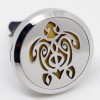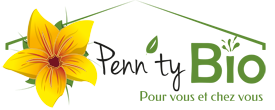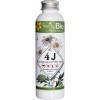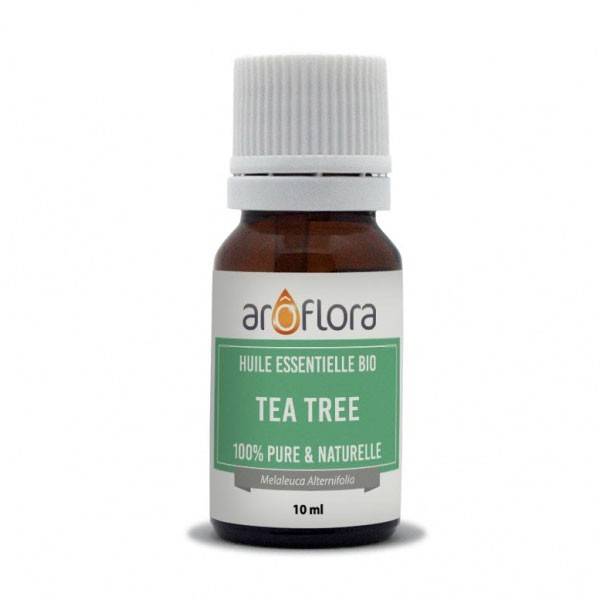
Tea tree AB - Leaves - 10 ml - Essential oil
The smell of Tea tree essential oil is woody and slightly camphoric. It is mainly used for its antimicrobial and antifungal properties. Acne, infections, sore throats, sunburn, mouth ulcers, cavities... An essential in view of the many properties it offers. 10ml bottle.
![]() KEY POINTS TO REMEMBER
KEY POINTS TO REMEMBER
![]() Antibacterial, antiviral and antifungal properties
Antibacterial, antiviral and antifungal properties![]() Care of wounds and cuts
Care of wounds and cuts![]() Relief from respiratory conditions
Relief from respiratory conditions![]() Anti-inflammatory and skin-soothing properties
Anti-inflammatory and skin-soothing properties
Identity card
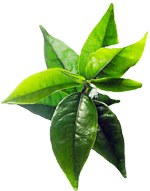
Botanical name : Melaleuca alternifolia
French name / other names : tea tree
Family : Myrtaceae
Certification : Essential oil from organic, controlled, certified crops, 100% pure and natural, uncut, non-terpenated. It benefits from the AB designation, certified by Ecocert France (FR-BIO-01).
Part of the plant used : Leaves
Method of production : Steam distillation
Origin : Madagascar
Yield : It therefore takes 100 kg of plant to obtain 1 kg of Tea tree essential oil.
Sold in : Amber glass bottle with codigoutte
Some information about the Tea tree
A traditional medicinal tree from the wetlands of Australia, it has been widely cultivated to satisfy a great demand linked to its interesting properties, in particular anti-infectious. It is a small tree with alternate needle-like leaves. Its name comes from the tea that was traditionally prepared from the leaves.
In French, we can also say tea tree. Its resinous, slightly musty aroma blends well with scents of cypress, eucalyptus, geranium, lavender, lemon, lemongrass, tangerine and rosemary.
Originally from Australia, the Aborigines traditionally use it to treat infected wounds or burns. Medical research is strongly interested in its many properties. Ranked first among antiseptic oils, it is well tolerated and non-toxic (pure use is possible in many cases). It is essential in the first aid kit with of course, lavender.
Tea tree essential oil is both antibacterial, antiviral, antiseptic and antifungal. Its applications are numerous. Cleansing and disinfecting, it is effective against all skin lesions such as: acne, burns, blisters, pimples, skin irritation, mycosis. Its affinities with the respiratory system and its ability to stimulate the immune system will help you fight bronchitis, colds, coughs, flu, fever, sinusitis,...
In diffusion, it will prevent the spread of infectious problems.
In massage, combined with a vegetable base, it will help relieve heavy legs.
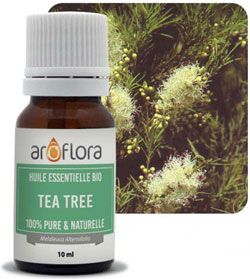
Chemotype*
Terpineol 1,4, Y terpinene
* The chemotype is the identity card of the essential oil, its composition chemically defined by chromatographic analysis. The same plant can have several compositions depending on the place and the variety. A chemotype depends on a property, an odor, a taste.
Chemical formula
Tea tree essential oil has monoterpenols (48%) as its main active ingredients: Terpinen-4-ol, alpha-terpineol, monoterpenes (40%) and sesquiterpenes (10%).
Allergens naturally contained in this essential oil : D-Limonène, Linalol.
Main indications
Skin irritation, mouth ulcers, mouth infection, colds, etc.
Therapeutic properties of tea tree essential oil
Main : Antibacterial, Antifungal, Antiviral, Immunostimulant, Antiprotozoal, Antiparasitic
Secondaries : Anti-inflammatory and antioxidant, Healing, Radioprotective, Antiasthenic, Cardiac tonic, Venous decongestant, Phlebotonic, Hyperthermic.
![]()
Tea tree essential oil is irritating to the skin. Remember to dilute it with a vegetable oil. Beware of oral overdose, it can temporarily cause confusion and loss of motor coordination. Not recommended for pregnant women under 3 months and babies under 3 years old.
Usage tips
Essential oils are powerful natural substances and should therefore be used with care. Even if essential oils have been used since Antiquity, their mode of use and the precautions for use are often poorly known. Many books deal with essential oils. It is therefore advisable to refer to it to find out about the traditional modes of use.
As an indication, some examples of use
 To promote the body's natural resistance, put 1 to 2 drops of tea tree essential oil in 1 teaspoon of honey, 3 times a day for 7 days. (maximum daily dose: 6 drops, i.e. 0.24 ml).
To promote the body's natural resistance, put 1 to 2 drops of tea tree essential oil in 1 teaspoon of honey, 3 times a day for 7 days. (maximum daily dose: 6 drops, i.e. 0.24 ml).
For oral hygiene (especially against canker sores), mix 3 drops in a spoon of honey, in a skin of water, in gargles
 It is advisable to mix a few drops of essential oil with vegetable oil (sweet almond, jojoba, macadamia, rosehip, argan, olive, etc.) to use as massage oil.
It is advisable to mix a few drops of essential oil with vegetable oil (sweet almond, jojoba, macadamia, rosehip, argan, olive, etc.) to use as massage oil.
To promote healthy urinary tracts, you will dilute 3 to 4 drops of tea tree essential oil in neutral vegetable oil, then massage the lower abdomen.
To relieve insect bites, 1 drop of tea tree directly on the skin.
To cleanse problem oily skin, dilute 3 to 4 drops in vegetable jojoba oil, then massage locally.
Positive, it will help maintain tone and vitality : dilute 2 to 4 drops in a little vegetable oil, then massage the wrists and along the spine.
Against unsightly pimples, blackheads and problem young skin, mix 10 drops of tea tree + 5 drops of fine lavender. Apply point by point, using a cotton swab (directly on pimples and blackheads).

To maintain healthy airways, diffuse tea tree essential oil for 15 to 30 minutes in living areas. Alternatively, put a few drops in a bowl of warm water, then inhale.
 Since essential oils are not soluble in water, they must be mixed with an emulsifier before pouring them into the bath. For example, they can be mixed with a liquid soap or a neutral shampoo (1 tablespoon). As a general rule, it is advisable not to exceed 10 drops per bath and not to stay longer than 20 minutes.
Since essential oils are not soluble in water, they must be mixed with an emulsifier before pouring them into the bath. For example, they can be mixed with a liquid soap or a neutral shampoo (1 tablespoon). As a general rule, it is advisable not to exceed 10 drops per bath and not to stay longer than 20 minutes.
For healthy feet, dilute 5 drops of tea tree + 5 drops of palmarosa in a basin of warm salted water, as a foot bath, twice a day.
For good scalp hygiene : add 3 drops of tea tree essential oil to your dose of shampoo.
Note : For diffusion, you can use our packaging in 30 and 100 ml bottles (organic essential oil packaged by Penntybio, AB certified for Aroma Plantes).
100% pure and natural oil
An essential oil is made up of chemically defined molecules (about 10,000 listed) that have been secreted by special plant cells. It can consist of from one to several hundred molecules, which helps explain why some essential oils have many properties but different therapeutic effectiveness. To guarantee the properties necessary for effective aromatherapy, it is important that an essential oil is 100% pure and natural (not cut, not deterpenated, not mixed with alcohol or vegetable oils) and preferably organic. This is the case for the essential oils we sell. They are sold in tinted bottles with a dropper cap.
Go to the "Properties and characteristics of essential oils" file. Whether pure or mixed, you can use them in our different diffuser models. The information given on each essential oil is for guidance only. Beware of self-diagnosis, do not hesitate to consult an aromatherapist or any other recognised professional and read our special file "properties of essential oils"in our thematic files.
Essential oils can help you
Essential oils are primarily used to help you treat many ailments. But beware, even if essential oils are often extracted from edible plants, their concentrations make it necessary to remain cautious and respect their curative power. The use of essential oils is relatively simple and if you follow a few basic rules, they will put their therapeutic genius at your disposal. Covering with essential oils has more advantages than disadvantages.

Find in our primer on care with essential oils, all the ailments for which the essential oil of tea tree enters the composition of the mixture :
Abscess, Mites, Acne, Chronic tonsillitis, Angina, Anti-lice, Anti-fleas, Anti-bedbugs, Canker sores, Mouthwash, Whiten teeth, Burns, Candidiasis, Tooth decay, Dark circles, Oily-dry hair, Cor in the foot, Cradle cap, Cystisis, Epidemic, Diaper rash in infants, Loss of voice, Scabies, Bad breath, Herpes, Hygroma, Impétigo, Mycosis, Ingrown toenails, Paronychia, Dandruff, Insect bites, Ingrown hair, Psoriasis, Measles, Dry/wet cough, Excessive sweating, Vaginitis, Chicken pox, Wart, Shingles
Who is authorized to use Tea tree essential oil ?
|
|
|
|
|
|
The risks of using tea tree essential oil
|
|
|
WARNING : These properties, indications and methods of use are taken from reference works or websites in aromatherapy, hydrotherapy and phytotherapy. They are found there on a regular basis and many of them have been confirmed by observations in the scientific community. However, this information is given for information purposes, it can not in any way constitute medical information, nor engage our responsibility. For any use of essential oils for therapeutic purposes, consult a doctor.
Regulatory information on the use of tea tree essential oil
Precautions for use : Keep out of reach of children. Do not use in children and pregnant or breastfeeding women. Prolonged use not recommended.
- Labels / certifications
- Organic farming
- Capacity
- 10 ml
- Odour
- Woody
- Odour
- Characteristic
- Odour
- Aromatic
- Odour
- Camphorated
- Odour
- Fresh
- Can be used
- In the bath
- Can be used
- By mouth
- Can be used
- Massage
- Can be used
- Broadcasting
- Recommended for
- Autumn / Winter
- Recommended for
- Spring / Summer
Specific references
16 other products in the same category:
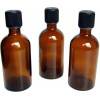
Set of 3 units - 100 ml bottles...
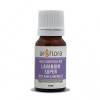
Lavandin super AB - Flowers - 10...
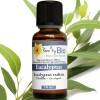
Organic Eucalyptus radiata -...
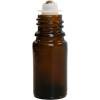
5 ml yellow glass roll-on bottle...
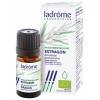
Organic Tarragon - Aerial part -...
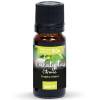
Eucalyptus citriodora AB -...
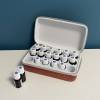
Storage kit for 18 essential...
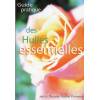
Practical Guide to Essential Oils
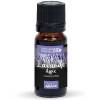
Aspic lavender AB - Flowers - 10...
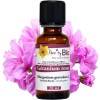
Organic Rose Geranium from Egypt...
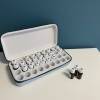
Storage kit for 36 essential...
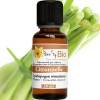
Organic Lemongrass - Leaves -...
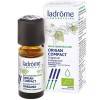
Organic compact oregano -...
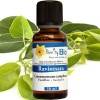
Organic Ravintsara - Leaves -...
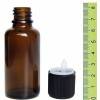
Empty yellow glass bottle 30 ml...
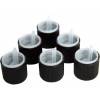
Set of 6 child safety caps for...
Customers who bought this product also bought:
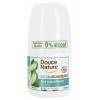
Fair Trade Aloe Vera refillable...
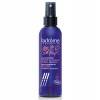
Organic Damask Rose hydrolat –...
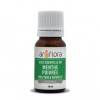
Peppermint AB - Leaves - 10 ml -...
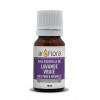
True lavender AB - Flowers - 10...
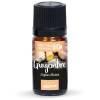
Ginger AB - Rhizomes - 5 ml -...
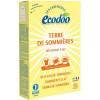
Terre de Sommières – dry stain...
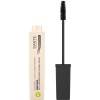
Natural lengthening mascara for...
